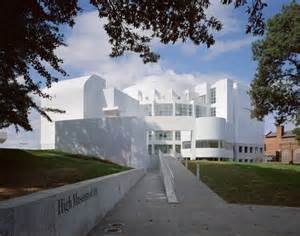- May 7 2017
Atlanta, GA
In 1938, Atlanta-based artist Hale Woodruff (American, 1900–1980) accepted a commission to paint a series of murals for Talladega College, Alabama, one of the first colleges established for African Americans in the United States. Installed in the institution’s Savery Library, the murals portray noteworthy events in the rise of black Americans from slavery to freedom. The first series depicts scenes from the slave uprising on the ship the Amistad in 1839. The second illustrates the founding of Talladega College and delves into themes in the struggle for freedom, education, and equality, which held personal significance for Woodruff as a black man in the Jim Crow South.
Though he painted the murals for a local audience of students and faculty, Woodruff intended their impact to reach beyond Talladega’s campus. The murals attracted national attention. Cultural leaders in the African American community, in particular, championed Woodruff’s paintings, adopting the project as a statement of pride and hope for racial equality. Today the murals remain symbols of the centuries-long struggle for civil rights.
Credit: Exhibition overview from museum website.
Whether or not you go, Rising Up: Hale Woodruff's Murals at Talladega College considers the development of the murals, their presence and significance at Talladega College, and Woodruff's impact on American mural painting in the years surrounding the Talladega project. An illustrated essay details all phases of the murals' conservation. Illustrated works span Woodruff's career and include oil studies; support materials such as prints, drawings, and photographs; and mural cycles he made in Mexico while studying with Diego Rivera.
Rising Up: Hale Woodruff's Murals at Talladega College
Exhibition Venues & Dates
- May 7 2017
Atlanta, GA

